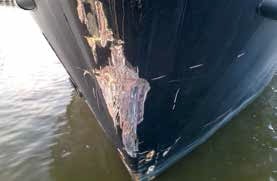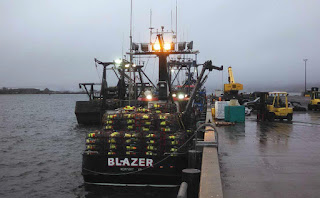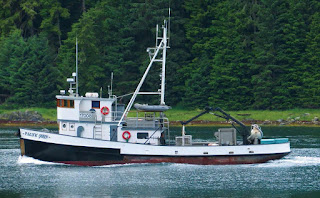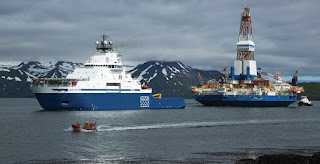LESSONS LEARNED
The 29 marine accidents the NTSB investigated in 2015 reveal an array
of safety issues that provide the following lessons learned
August 18, 2016
Yesterday the US National Transportation Safety Board (NTSB) released Safer Seas Digest a “one-stop shop” for mariners and others to review concise summaries of a year’s accident investigations. The digest also includes the NTSB’s Top 8 Most Wanted List, which reveals the 10 safety issues that played the most significant role in last year’s incidents.
“Since we first published Safer Seas 2013″ said NTSB Chairmen Christopher Hart “we have heard that the yearly digests are used in crew training and safety meetings both on board and shoreside.”
Incident summaries range in scope from the massively expensive grounding of Shell’s Alaska drilling rig Kulluk to a large oil spill in the Houston Ship Channel and a collision with the chemical tanker Carla Maersk.
None of these incidents are news to gCaptain readers but, in addition to a recap of the US’s worst marine incidents, the NTSB also shares the top 10 lessons they learned from investigating these incidents.
NTSB’s TOP 8 LESSONS LEARNED IN 2015
#8 VOYAGE PLANNING
Before getting under way, vessel crews should develop a voyage plan covering the entire voyage from dock to dock. The plan should outline courses, expected times of course changes, transit speeds, available aids to navigation, and alternative routes or areas of refuge. It should also identify hazards to navigation along the intended route, considering factors such as restricted waters, traffic separation schemes, expected seasonal weather conditions, and areas of extensive tidal effects. Accidents involving the American Dynasty and Tristan Janice may have been avoided or mitigated by a detailed voyage plan.
#7 COMMUNICATIONS
Before each voyage, vessel crews should develop a communications plan to include both internal (i.e., between watchstanding locations) and external (i.e., between vessels) communications, primary and backup communication systems, a list of stations or vessels using the systems, and procedures for switching between the systems in the event of a failure. Also, before engaging in any operation that involves an increased risk, vessel crews should discuss information expected to be shared during the operation along with emergency procedures. Poor internal communications were factors in the American Dynasty and Anna Smile accidents, and a lack of effective external communications played a role in the accidents involving the Mesabi Miner, and Riley Elizabeth tow.
#6 FATIGUE
Given that inadequate crew/operator rest is a significant factor in accidents among all transportation modes, the NTSB has ranked reducing fatigue related accidents among the top ten safety improvements on its latest Most Wanted List. In the marine industry, poor watchstanding due to fatigue was responsible for the loss of three fishing vessels: Pacific Queen, Savannah Ray, and Titan. Effective ways to prevent fatigue include hours-of-service limits, predictable work/sleep schedules, and consideration of circadian rhythms in shift scheduling.
#5 ALARMS AND NAVIGATION ALERTS
Alarms can be effective tools in ensuring alert and vigilant watchstanding. These alarms can be based either on time, by sounding at preset intervals that require action by the watchstander, or on proximity, such as depth sounders, GPSs, or radar indicators. To effectively employ these alarms, owners and operators should implement written procedures for their use, and watchstanders should be familiar with their functionality. The groundings of fishing vessels Savannah Ray and Titan might have been prevented through proper use of alerting and navigation alarms.
#4 WRITTEN PROCEDURES AND TRAINING
The failure to take proper action to prevent or mitigate an emergency can often be traced to the absence of specific written procedures and a lack of training. Inadequate emergency procedures and training for engineering systems were contributing causes in the allision of bulk carrier Anna Smile with a grain elevator. The absence of ship-specific procedures for the autopilot on towing vessel Krystal Sea factored in its collision with Coast Guard cutter Sycamore.
#3 FISHING VESSEL STABILITY
A forum on fishing vessel safety the NTSB convened several years ago revealed that fishermen may not know how to apply principles of stability in the safe operation of their vessels. The NTSB recommended that all owners, masters, and engineers of commercial fishing vessels receive mandatory training and prove competency in vessel stability, watertight integrity, subdivision, and the use of vessel stability information. The capsizing and sinking of fi vessel Christopher’s Joy was attributed to a disregard for the impact of deployed fi gear on the reserve stability of the vessel.
#2 WATERTIGHT INTEGRITY
Maximizing the watertight integrity of a vessel is critical to buoyancy and stability in the event of a marine casualty. A hole in the side shell of a vessel, especially near the waterline, poses an immediate risk. When a potential hull breach has been identified, operations should be halted until repairs are made or the crew determines that the damage does not affect seaworthiness.
For systems that source from or discharge to the sea, an effective lock-out/tag-out program helps
to prevent inadvertent f associated with repairs. In addition, watertight doors should be kept closed at all times when a vessel is under way, unless a crewmember is passing through. A lack of watertight integrity contributed to the complete loss of six vessels during this reporting period: Celeste Ann, Christopher’s Joy, Jim Marko, Nalani, Nash, and Spirit of Adventure.
#1 ABANDON SHIP PROCEDURES
Crewmembers should wear personal protective equipment for operations under way and always wear personal flotation devices when abandoning ship. When towing vessel Jim Marko sank in the Mississippi River, two crewmembers were barefoot and one did not wear a personal flotation device. The river was experiencing high-water conditions at the time, which would have posed a heightened risk had crewmembers been forced to abandon ship into the water.























































